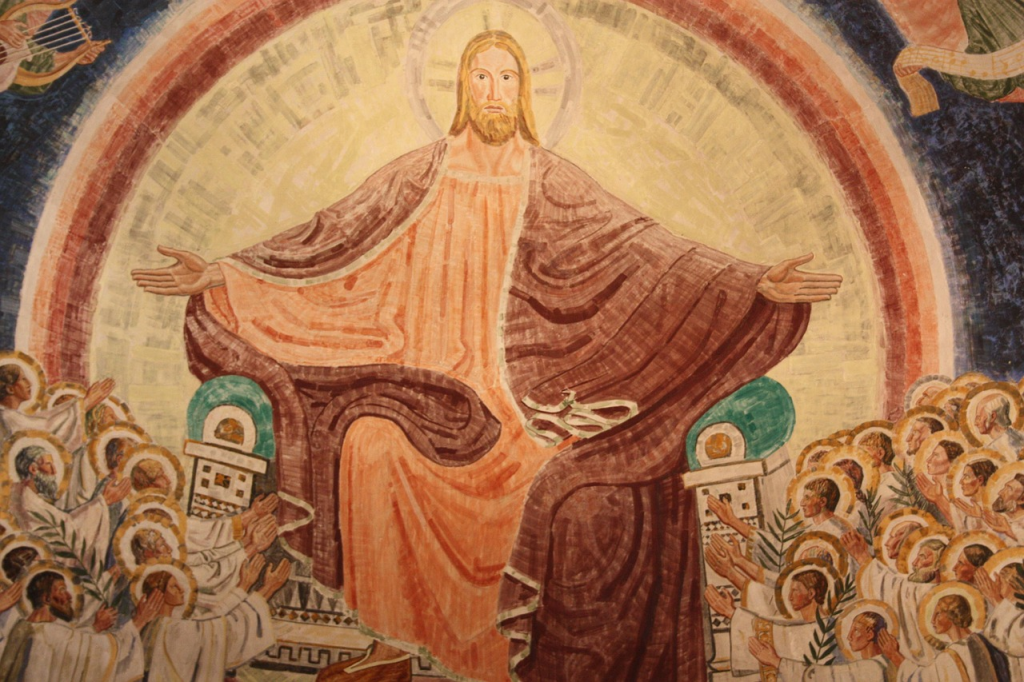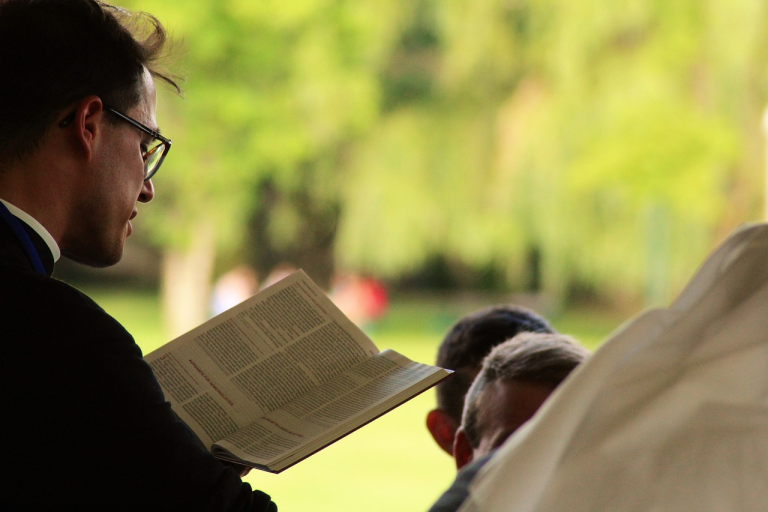Christ’s Threefold Ministry from Heaven’s Throne

The Apostles’ Creed affirms our belief that Christ “ascended to heaven and is seated at the right hand of God the Father almighty.” Even though this ancient statement of core Christian beliefs acknowledges the ascension, it often doesn’t receive the same level of attention in modern discussions about Christ’s work. We tend to focus more on what Jesus did in the past and what he will do in the future, leaving little room to consider what he’s doing right now.
However, this wasn’t always the case. The New Testament writers frequently referred to the ascension and explained how it impacts the church in the present (for example, Eph. 1:20–23; 2:8; Heb. 1:3; 8:2; Phil. 2:9). Kelly Kapic writes that the early church fathers saw the “ascension as the climax of redemption.” Later, the Heidelberg Catechism described the ascension as Christ remaining in heaven “on our behalf,” which is a great benefit to us.
So, how can we gain a deeper understanding of all the blessings that come from the ascension? We can do this by looking more closely at how Christ, as our ascended king, priest, and prophet, continues to act for the good of his church.
Ascended King
When we talk about the ascension, the idea of kingship is probably the most familiar. The phrases about Jesus being raised up and seated at God’s right hand indicate that he has been enthroned over everything (Eph. 1:19–23). He is the victorious king, the Son of David, whose throne is eternal (2 Sam. 7:13) and who has made his enemies into a footstool (Ps. 110:1).
But we shouldn’t think of Christ’s heavenly reign as something passive, where he just sits still. As the ascended king, he actively rules over his church. Christ protects his church and overcomes its enemies (Matt. 16:18; 2 Thess. 3:3). In fact, the book of Hebrews gives hope to a persecuted church because Christ rules from God’s right hand (Heb. 1:3; 8:2; 10:12; 12:3). He provides for his church by giving gifts that help it grow and thrive (Eph. 4:7–12; 5:29). Truly, he is the king of a prosperous kingdom (Mic. 4:4–5). Herman Bavinck sums up Christ’s ascended kingly rule well: “He demonstrates his kingship in gathering, protecting, and ruling his church, leading it to eternal blessedness.”
Ascended Priest
We often think of Christ’s work on the cross and his resurrection as the main parts of his priestly work to bring sinners back to God. But this view is incomplete because the ascension shows that God has accepted his sacrifice. Christ’s continuous intercession (Heb. 7:25) and advocacy (1 John 2:1), along with the work of the Holy Spirit to make believers holy, are all part of the ongoing application of his priestly offering. As John Murray puts it, Christians can be sure that Christ’s help comes from “omnipotent compassion.” Jesus understands the personal fears, stresses, and struggles of life, and he acts to heal them.
Ascended Prophet
A prophet is someone who proclaims and validates God’s words to God’s people. John starts his Gospel by referring to Jesus as the Word (John 1:1–3). Jesus also says that he is both the proclaimer and the embodiment of truth (John 8:31–32; 14:6; 17:17–20). In a key statement about his earthly ministry, Jesus presents himself as the prophetic announcer of the Year of Jubilee (Luke 4:16–30). Clearly, in the gospel, Jesus is both the message and the messenger.
This doesn’t end with his ascension. After his ascension, his prophetic work becomes even more powerful. At Pentecost, Jesus poured out his Spirit, who, as he had said before, would guide his followers into truth (John 14:26; 16:13). As the ascended prophet, he sends his Spirit to his people so that the Spirit can lead them back to him. What’s more, his prophetic ministry continues when he sends the Spirit to inspire the writing of Scripture (2 Cor. 13:3) and when the Spirit works through this living Word to open people’s hearts and draw them to Jesus (2 Cor. 4:6).
The Ascended Church
Christ’s ascension shows that he is the head of the church. This reveals a beautiful truth: as his body, the church responds to and participates in his ascended ministry. This surely affects every part of the church’s life, its worship, and its mission.
The different roles of Christ—king, priest, and prophet—work together to bring glory to God and bring his people into the presence of the Trinity. The ascended king sends the church out to prophetically share the message of his sacrificial atonement. The ascended priest prays for the church, so that God’s kingdom can grow in the hearts of believers through God’s Word. The ascended prophet proclaims the king’s reign, which is made possible by his priestly work, through the church.
However, the ascended Christ doesn’t carry out these roles in a way that we can see with our eyes. It’s no wonder that sometimes we might feel like he’s absent. But we hold on to the hope of the future, when his rule, his priestly blessing, and his prophetic word will be clearly present. We look forward to the day when a voice from the throne will say, “The dwelling place of God is with man” (Rev. 21:3).





